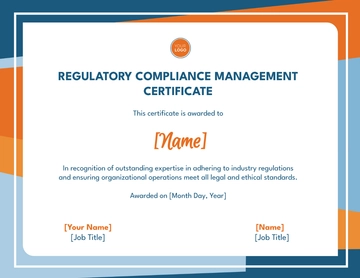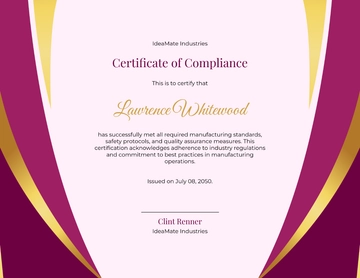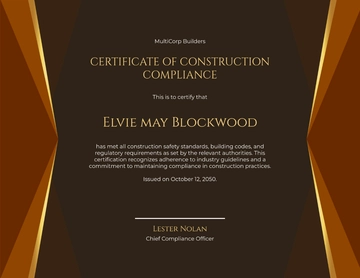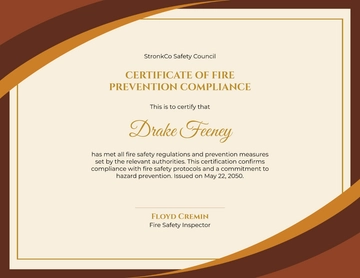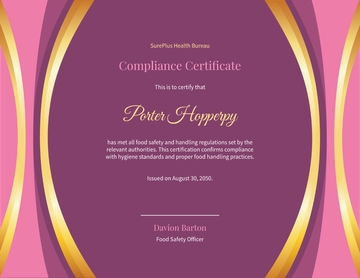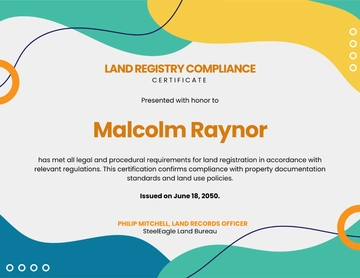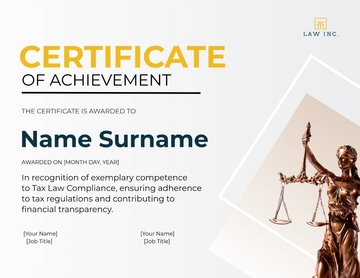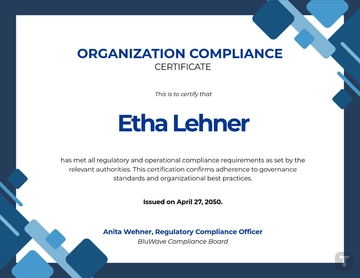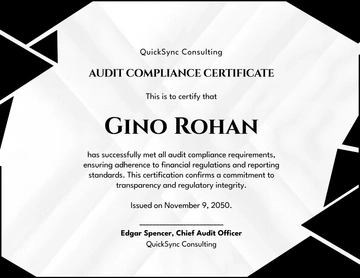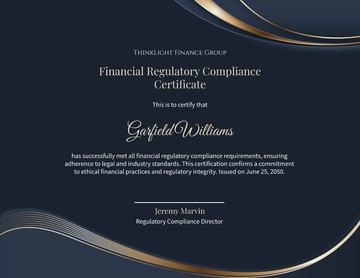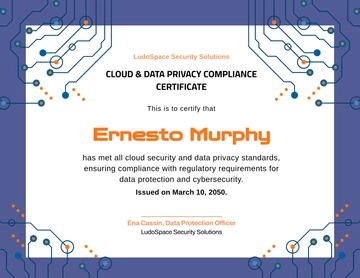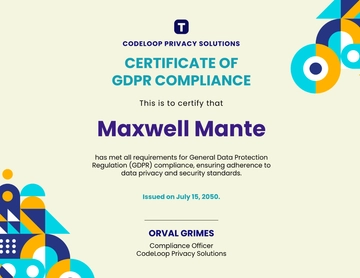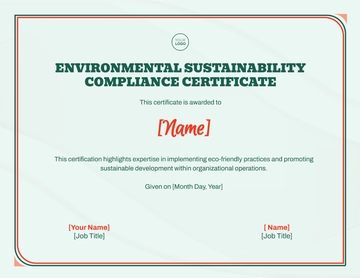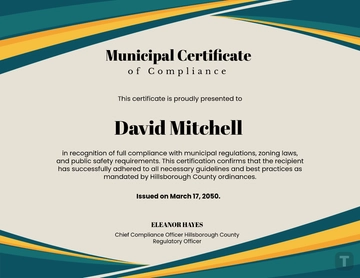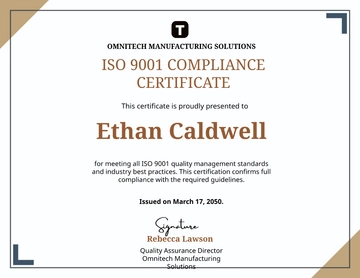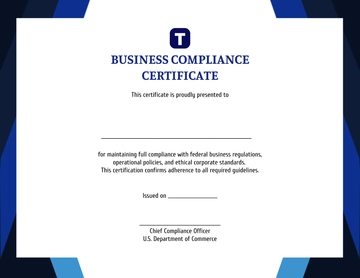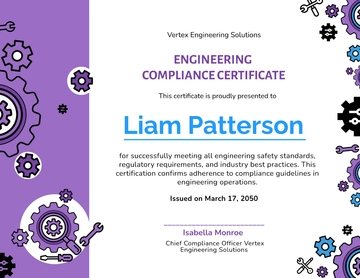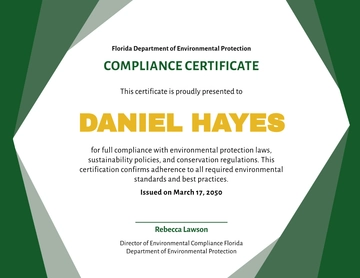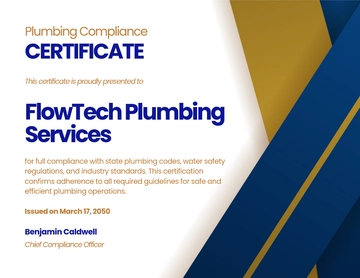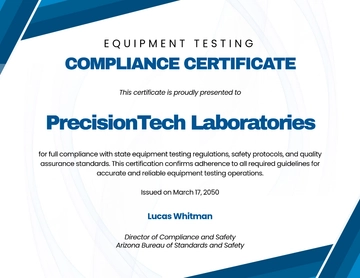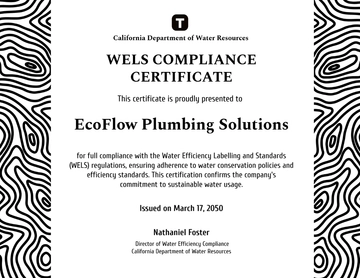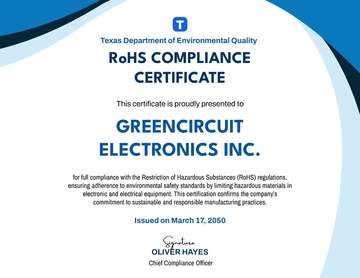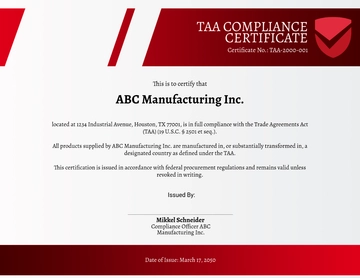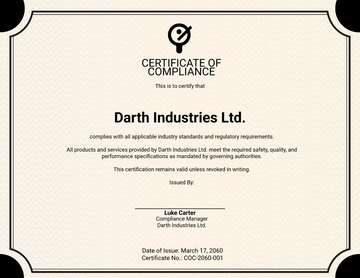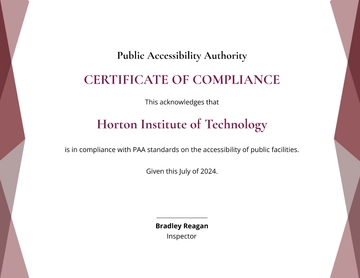Free Product Compliance Certification Process in Advertising
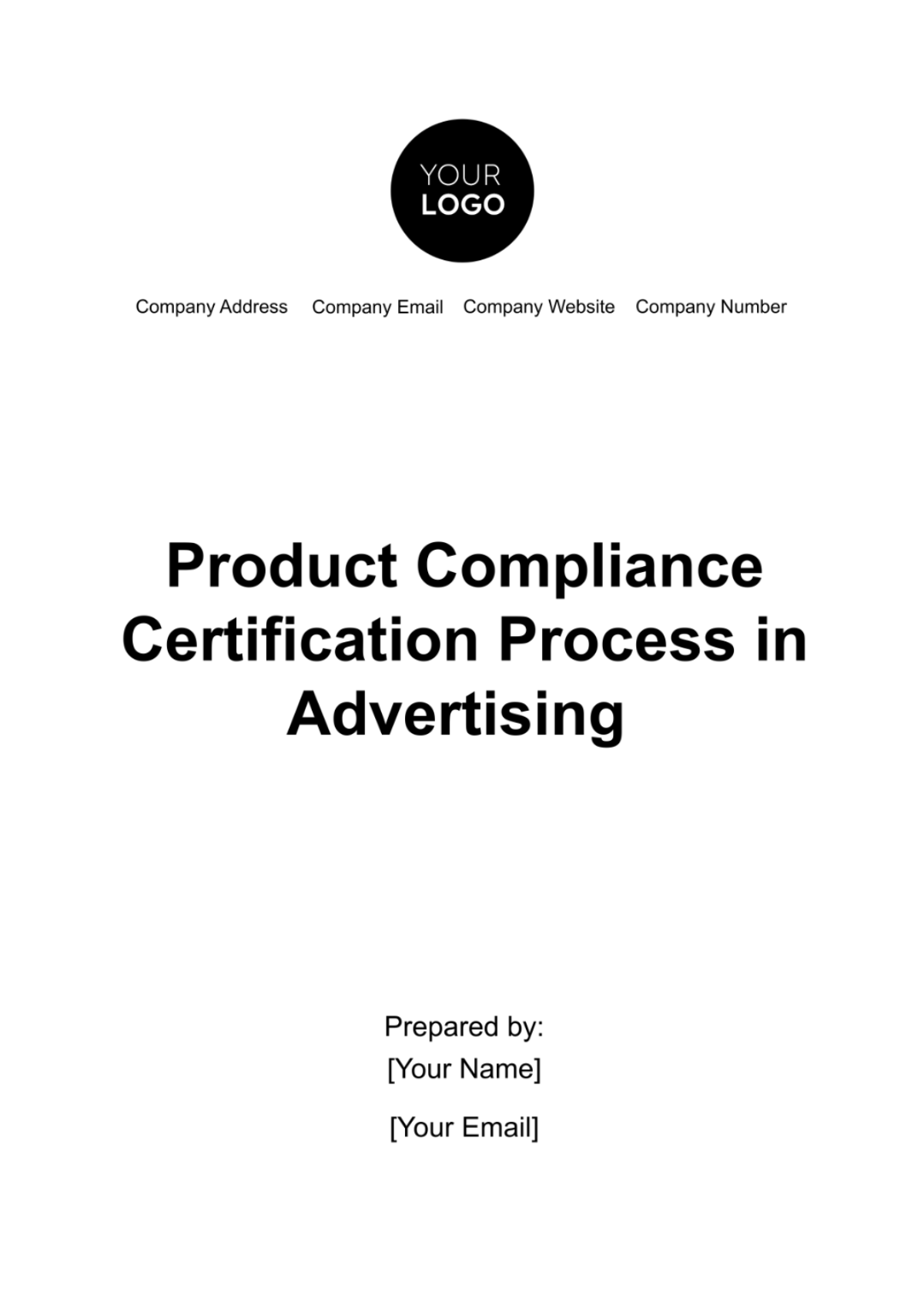
1. Purpose
The primary purpose of this document is to delineate a clear and comprehensive process for obtaining Product Compliance Certification in the realm of advertising for [Your Company Name]. In an industry where regulations and ethical standards are not just guidelines but essential benchmarks, this process is integral to our operational integrity and brand reputation.
This certification process is meticulously crafted to ensure that all advertising products, campaigns, and related materials developed or disseminated by [Your Company Name] strictly adhere to a wide array of relevant standards. These include, but are not limited to, legal regulations across various jurisdictions, ethical norms, and industry-specific best practices.
The significance of this process extends beyond mere regulatory adherence. It is about embedding a culture of compliance and ethical responsibility in every facet of our advertising operations. This commitment to upholding high standards is pivotal in maintaining the trust of our clients and the end consumers, thereby safeguarding not only our compliance posture but also our market reputation.
Moreover, the process outlined in this document serves as a guiding framework for our teams. It provides clear instructions and checkpoints, ensuring that compliance is considered at every stage of our advertising product development and campaign execution. This proactive approach is key to preemptively identifying and mitigating potential compliance risks, thus fostering an environment of continuous improvement and excellence within [Your Company Name].
2. Certification Process Overview
Goal
The goal of the Product Compliance Certification process for [Your Company Name] is to ensure and certify that all our advertising products consistently meet the highest standards of compliance. This encompasses adherence to a wide range of regulations and guidelines across various jurisdictions, as well as industry-specific standards. By achieving this, we aim to fortify our commitment to ethical advertising practices and uphold our reputation as a compliant and responsible entity in the advertising industry.
Our certification process is not just a formality; it serves as a testament to our dedication to maintaining integrity and excellence in our advertising outputs. It provides a structured approach to verify that every piece of advertising material we produce or distribute is not only effective and creative but also fully compliant with the legal and ethical norms of the industry.
Scope
The scope of this certification process is comprehensive and inclusive, covering all facets of our advertising materials and campaigns:
All Advertising Materials: This includes digital content, print media, audio-visual materials, and any other form of advertising content created by [Your Company Name].
Campaigns Across All Platforms: The process applies to campaigns run on various platforms, including online, television, radio, print, and outdoor advertising.
Geographical and Jurisdictional Compliance: Given the global reach of many advertising campaigns, this process encompasses compliance with regulations not just in our base country but across all jurisdictions where our advertisements may be viewed or distributed.
Industry-Specific Guidelines: Apart from legal compliance, the process also ensures adherence to industry-specific guidelines and ethical standards, which may include sector-specific advertising rules, standards set by advertising authorities, and best practices recommended by industry bodies.
By covering such a broad scope, the certification process ensures that every aspect of [Your Company Name]'s advertising is scrutinized for compliance, thereby mitigating risks associated with non-compliance and reinforcing our commitment to responsible advertising practices.
3. Compliance Standards and Requirements
In order to ensure that [Your Company Name]'s advertising materials and campaigns meet the highest standards of compliance, it is essential to adhere to a set of well-defined standards and requirements. These standards are not just legal obligations but also serve as a framework for ethical and responsible advertising practices. The following are the key areas of compliance standards and requirements:
Data Protection and Privacy
General Data Protection Regulation (GDPR): As a cornerstone of data protection in the digital age, GDPR compliance is critical, especially for advertising that targets or is accessible by the European Union audience. It mandates stringent handling and processing of personal data.
California Consumer Privacy Act (CCPA): For audiences in California, USA, CCPA compliance is essential. It provides consumers with rights over their personal data, similar to GDPR.
Other Relevant Data Protection Laws: Depending on the geographic reach of the advertising campaigns, compliance with other regional data protection laws (like PIPEDA in Canada, LGPD in Brazil, etc.) is also crucial.
Advertising Standards
Federal Trade Commission (FTC) Guidelines: The FTC guidelines in the United States govern the truthfulness and non-deceptiveness of advertisements, mandating that claims in advertisements must be substantiated.
Advertising Standards Authority (ASA) Codes: In the United Kingdom, the ASA codes provide a framework for responsible advertising, ensuring that ads are honest and socially responsible.
Local Advertising Laws: Each country or region may have specific advertising laws and regulations. Compliance with these local laws is essential to avoid legal repercussions and maintain the integrity of the advertising campaigns.
Intellectual Property
Copyright Laws: Respecting the intellectual property rights of others is fundamental. This involves ensuring that all content used in advertisements, including images, music, and text, is either owned, licensed, or used under fair use provisions.
Licensing Agreements: Where third-party content is used, proper licensing agreements must be in place. This includes agreements for stock images, music, video footage, and any other copyrighted material.
Adhering to these compliance standards and requirements is fundamental for [Your Company Name] in maintaining the legality and ethical standing of its advertising campaigns. It not only safeguards the company against legal risks but also enhances its reputation as a responsible advertiser committed to upholding the highest standards of integrity in its practices.
4. Certification Steps
In order to achieve the high standards of compliance required in our advertising practices, [Your Company Name] has established a systematic and rigorous certification process. This process is meticulously structured to ensure that every piece of advertising material not only resonates with our audience but also strictly adheres to the various compliance standards and requirements outlined earlier. It involves a series of well-defined steps, each assigned to specific teams within our organization, ensuring that responsibility and accountability are clearly delineated.
This section of the document provides a detailed overview of each step in the certification process, outlining the specific actions to be taken and identifying the responsible parties. The process is designed to be comprehensive and thorough, involving multiple layers of review and verification to ensure that no aspect of compliance is overlooked.
From the initial review of the advertising material by our Marketing Team to the final compliance verification and issuance of a compliance certificate by our Compliance Department, each step is crucial. These steps represent a collaborative effort across various departments within [Your Company Name], reflecting our holistic approach to compliance and our commitment to maintaining the highest standards of ethical advertising.
The following table breaks down these steps, offering a clear roadmap for navigating the certification process:
Step | Action | Responsible Party |
1 | Review of Advertising Material | Marketing Team |
2 | Compliance Check Against Standards | Legal Team |
3 | Corrections and Modifications | Creative Team |
4 | Final Compliance Verification | Compliance Officer |
5 | Issuance of Compliance Certificate | Compliance Department |
Through this structured process, [Your Company Name] ensures that all its advertising materials not only meet the creative and strategic goals but also align perfectly with the legal and ethical standards of the advertising industry.
5. Documentation and Record Keeping
For [Your Company Name], maintaining meticulous documentation and records is an essential part of the Product Compliance Certification process in advertising. This practice not only ensures transparency and accountability but also provides essential evidence of compliance efforts. Detailed documentation aids in identifying areas for improvement and serves as a reference in case of any compliance-related inquiries or audits. The following are the key components of our documentation and record-keeping process:
Record of Compliance Checks
Description: This involves maintaining detailed logs of all compliance checks performed during the certification process. Each log entry includes the date of the check, the advertising material reviewed, the specific compliance standards assessed, and the outcomes of the review.
Purpose: These records serve as proof of due diligence in compliance efforts and help in tracking the effectiveness of current compliance measures.
Modifications and Approvals
Description: Documentation of all corrections, modifications, and approvals is crucial. This includes notes on any non-compliance issues identified, the specific modifications made to address these issues, and the final approval of the advertising material for compliance.
Purpose: This documentation is critical for understanding the evolution of each advertising material from its initial creation to its final compliant form. It also provides insights into common compliance issues and effective modifications.
Certification Records
Description: Copies of all issued compliance certificates are kept on record. Each certificate includes details such as the certification number, date of issuance, description of the advertising material certified, and the validity period of the certification.
Purpose: These records serve as official evidence of compliance for each piece of advertising material. They are essential for both internal records and external verification purposes.
The documentation and record-keeping process at [Your Company Name] is an integral part of our commitment to compliance. By systematically documenting each step of the certification process, we ensure that our advertising practices not only meet current compliance standards but are also prepared for future audits and regulatory reviews. This meticulous approach to documentation reflects our dedication to upholding the highest standards of integrity and responsibility in the advertising industry.
6. Monitoring and Continuous Improvement
At [Your Company Name], we recognize that the landscape of advertising compliance is constantly evolving. Therefore, monitoring our compliance practices and continuously improving them is not just a regulatory requirement, but a fundamental aspect of our business strategy. This chapter outlines our approach to ensuring that our compliance processes remain effective, relevant, and up-to-date with the latest standards and best practices.
Regular Audits
Objective: Regular audits are conducted to assess and ensure ongoing compliance with evolving standards. These audits are crucial for identifying areas where our practices may have become outdated or insufficient due to changes in legal requirements, industry standards, or business operations.
Frequency and Scope: Audits are scheduled on a bi-annual basis, though additional audits may be conducted in response to significant changes in compliance laws or industry practices. Each audit comprehensively covers all aspects of our advertising operations, including recently issued compliance certificates, documentation, and the efficacy of current compliance checks.
Audit Process:
Pre-Audit Preparation: Gathering all necessary documentation and scheduling reviews with relevant departments.
Execution: Conducting thorough examinations of compliance records, procedures, and advertising materials.
Post-Audit Reporting: Compiling findings and providing recommendations for improvements.
Feedback Mechanism
Purpose: A robust feedback mechanism is essential for continuous improvement in the certification process. It involves gathering insights and suggestions from employees, clients, and industry experts.
Implementation: This mechanism includes regular surveys, feedback sessions, and an open channel for suggestions related to compliance processes.
Action on Feedback: Feedback is systematically reviewed, and actionable insights are integrated into our compliance processes. This ensures that our practices are not only compliant but also efficient and aligned with industry best practices.
Table of Monitoring and Improvement Actions
Action Item | Description | Frequency | Responsible Party |
Compliance Audits | Comprehensive review of compliance with advertising standards | Implementing changes based on audit findings and feedback. | Compliance Department |
Feedback Collection | Gathering feedback from internal and external stakeholders | Ongoing | Compliance Officer |
Process Improvement | Implementing changes based on audit findings and feedback. | As needed. | Management Team |
Through these monitoring and continuous improvement initiatives, [Your Company Name] ensures that our Product Compliance Certification process in advertising remains a living, evolving system. It reflects our commitment to excellence and our proactive approach to adapting to the dynamic world of advertising compliance.
7. Conclusion
The establishment of the Product Compliance Certification Process is a cornerstone in [Your Company Name]'s commitment to uphold the highest standards of legal and ethical compliance in our advertising activities. This comprehensive process is not merely a procedural formality; it reflects our deep-seated dedication to quality, trust, and integrity. By rigorously adhering to this process, we ensure that all our advertising products are in strict compliance with current regulations, thereby safeguarding our reputation and the trust of our clients and customers. It is a testament to our ethos of responsible advertising, demonstrating our proactive approach to navigating the complexities of compliance while maintaining our competitive edge in the industry.
8. Appendices
Appendix A: Compliance Standards Checklist
Appendix B: Sample Compliance Certificate
Appendix C: Audit and Feedback Reports
This process is crucial for [Your Company Name] to consistently deliver advertising products that meet the highest standards of compliance, reflecting our dedication to excellence in every aspect of our operations.
- 100% Customizable, free editor
- Access 1 Million+ Templates, photo’s & graphics
- Download or share as a template
- Click and replace photos, graphics, text, backgrounds
- Resize, crop, AI write & more
- Access advanced editor
Introducing the Product Compliance Certification Process In Advertising Template by Template.net. Meticulously crafted, this document ensures seamless adherence to regulatory standards in advertising. Streamline your compliance procedures with this comprehensive template, offering clarity and precision for individuals and companies navigating the complex landscape of product advertising compliance.
You may also like
- Gift Certificate
- Memento Certificate
- Astrology Certificate
- Marriage Certificate
- Death Certificate
- Teacher Certificate
- Gift SPA Certificate
- Christmas Gift Certificate
- Community Service Certificate
- Background Certificate
- Donation Certificate
- Divorce Certificate
- Border Certificate
- Football Certificate
- Employment Certificate
- Tooth Fairy Certificate
- Academic Certificate
- Achievement Certificate
- Adoption Certificate
- Appreciation Certificate
- Art Certificate
- Attendance Certificate
- Authenticity Certificate
- Award Certificate
- Baptism Certificate
- Baseball Certificate
- Basketball Certificate
- Birth Certificate
- Birthday Certificate
- Certificate Letter
- Champion Certificate
- Cheer-leading Certificate
- Christmas Certificate
- Church Certificate
- Coach Certificate
- Completion Certificate
- Compliance Certificate
- Computer Certificate
- Conformance Certificate
- Congratulations Certificate
- Construction Certificate
- Corporate Certificate
- Course Certificate
- Degree Certificate
- Destruction Certificate
- Diploma Certificate
- Doctor Certificate
- Dog Certificate
- Employee Certificate
- Employee of the Month Certificate
- Excellence Certificate
- Experience Certificate
- Fitness Certificate
- Funny Certificate
- Graduation Certificate
- Health And Safety Certificate
- Honorary Certificate
- Hr Certificate
- Internship Certificate
- Kids Certificate
- Kindergarten Certificate
- Leadership Certificate
- Leave Certificate
- Management Certificate
- Medical Certificate
- Membership Certificate
- Merit Certificate
- Music Certificate
- No Objection Certificate
- Painting Certificate
- Participation Certificate
- Performance Certificate
- Pet Certificate
- Photography Certificate
- Preschool Certificate
- Professional Certificate
- Project Certificate
- Real Estate Certificate
- Recognition Certificate
- Retirement Certificate
- Reward
- Salary Certificate
- Scholarship Certificate
- School Certificate
- Service Certificate
- Soccer Certificate
- Sports Certificate
- Stock Certificate
- Student Certificate
- Thank You Certificate
- Training Certificate
- University Certificate
- Volunteer Certificate
- Warranty Certificate
- Winner Certificate
- Work Certificate
- Workshop Certificate
- Yoga Certificate
- Dance Certificate
